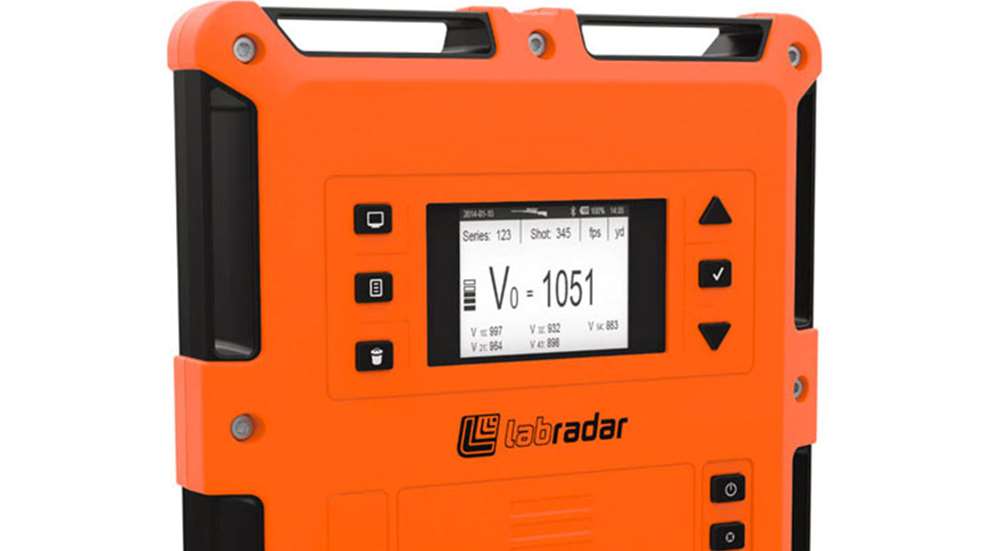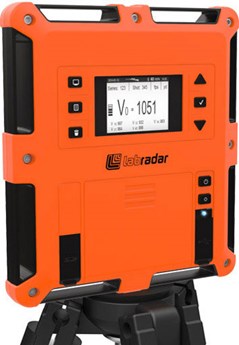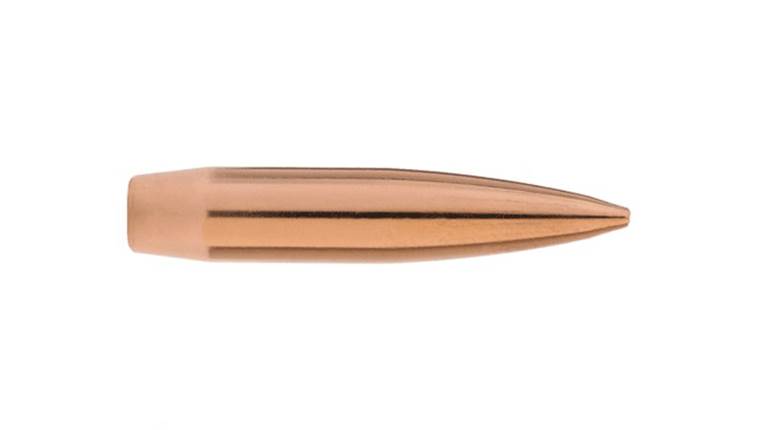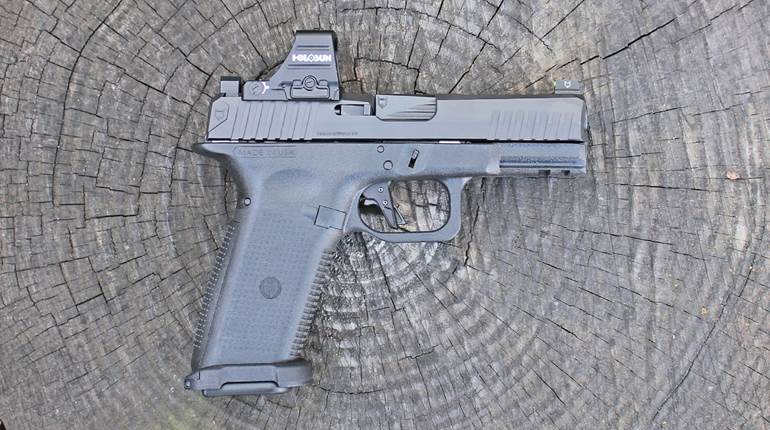
Chronographs play an important role in providing shooting enthusiasts with information needed to compare the performance of differing loads of ammunition. The new LabRadar chronograph system takes the process of measuring and recording a bullet's speed in a fresh direction that has definite advantages when compared to other options on the market. Not only is the system one of the easiest to set up, it captures much more data with each shot fired. To better understand why the LabRadar is such a useful innovation, it's helpful to have a better understanding of what chronographs are used for along with the technology which has come before. 
Many of the modern commercial-grade chronographs for sporting applications employ two optical sensors, called “screens,” arranged one in front of the other. Bullets are fired over the screens causing an interruption in the sensor's source of natural or artificial light. The time it takes for the bullet to travel the distance between the two sensors is measured electronically, processed by the chronograph's on board computer and then displayed as a velocity. This velocity can then be churned through a mathematical formula along with the bullet's weight to calculate how much energy is exerted when it strikes a target. Those numbers can then be combined with additional information (accuracy, trajectory) to form a meaningful profile of a cartridge’s performance when fired from a particular gun.
I'm a big fan of home-grown ballistics information. But over the years, I've found the typical optical sensor chronographs can be a challenge to work with. They must be placed in front of the gun’s muzzle. This is a dangerous location for any object one does not wish to destroy. Shots have to be fired very close to the sensors, which increases the likelihood of the device being nicked, dinged or blown apart.
Setting up an optic sensor chronograph can take a long time. The sensors have to be at the correct distance and height while resting in proper front-to-back alignment with the firearm to avoid getting error messages. If the lighting isn't just right with the sensors shaded just so, you will see more errors. The sensors usually will not operate correctly with the flickering of indoor lighting without added accessories. These devices are also sensitive to muzzle blast from your gun or even the guy shooting next to you, especially in enclosed spaces like indoor ranges (resulting in yet more error messages). If you do manage to find a quiet corner of an outdoor shooting range and get all of your gear set up just right, don't be too surprised when a gust of wind blows the tripod holding the device over onto the ground so that the alignment process has to start all over again.
The LabRadar ballistic chronograph is a game changer because it does away with optical sensors and all of the related clutter. Instead, this self contained unit uses a combination of continuous wave Doppler radar and advanced digital signal processing technologies developed by Infinition Inc. of Trois-Rivieres, Quebec, Canada. Much like the radar guns used by law enforcement officials to check vehicle speeds on the highway, the LabRadar projects a focused radar signal to monitor the flight of a bullet. The unit rests next to the gun, just behind the muzzle, instead of down range where it could be damaged.
The radar signal is not affected by the environmental conditions that hamper optical sensors. It works in all lighting conditions, inside or outside, and is not disturbed by vibrations from muzzle blast. The radar beam is relatively narrow but not so narrow as to require shots fired into a tiny 2" window. As long as the radar and the gun are pointed at the same target down range, and the gun is held steady for repeatable shot placement, the unit will generate solid readings.
Setting up the system is quick and easy. The bottom of the unit is fitted with a brass nut threaded to match most photography tri-pod mounts. Use a sturdy full size tri-pod for standing shots or the LabRadar Bench Mount for bench rested shots. Avoid the small, flexible tri-pods that are popular for point-and-click cameras because they do not provide enough support and can allow the radar to tip and fall. Turn the system on, use the aiming notch located at the top of the unit to align it with a target down range and you are ready to program the unit in preparation for shooting.
The learning curve for programming and operating the LabRadar is comparable to that of a new smart phone or tablet. All of the features and functions are easy to access and use once you've familiarized yourself with the buttons and menus. I highly recommend reading through the entire owner's manual, with the LabRadar powered up and near at hand, before the first trip to the range and then keeping the manual handy at the range until you've got the hang of it.
The system can measure the velocity of single projectiles at speeds from 65 to 3,900 fps. This means it can be used to track a wide variety of subsonic, transonic and supersonic projectiles including those fired from air rifles, bows and crossbows, rimfire and center-fire firearms. It can also track shotgun slugs (but not multiple projectile rounds like bird shot or buckshot).
So far so good, but here's where things start to get much more interesting. Optical sensor chronographs record a single velocity for each shot fired at a given distance from the muzzle, which is usually between 10 to 15 feet from the muzzle. Most units are able to record a series of shots, or string if you prefer. Some folks like to shoot five-shot strings but American Rifleman prefers 10-shot strings for formal velocity testing. The strings are then analyzed by the chronograph to find the minimum and maximum velocities, the extreme spread, average velocity and standard deviation.
The LabRadar takes things a big step farther by providing the same standardized information as other chronographs at multiple target distances. This is possible because the electronics track and record the bullet during its entire journey through the radar pulse and then extrapolates the velocity of the bullet at the muzzle, displayed as Velocity 0 (V0), and up to five more distances selected by the operator before the shot is fired.
Let's say that while testing a 9 mm handgun I want to record the muzzle velocity as well as how fast the bullet is traveling at five, 10, 15, and 25 and 50 yards. I would use the buttons and menus to set each distance starting with five yards as V1, 10-yards as V2, and so on. As each shot is fired, all six distances are extrapolated and displayed. When the 10-round string is complete, the radar calculates and records the standard data (minimum, maximum, average, etc.) for all six distances in one table. You can also program in the bullet's weight to record the bullet's energy at each distance as well.
The LabRadar's ability to generate multiple velocity data is impressive, although it does have its limits. Smaller projectiles reflect a weaker signal back to the chronograph. This means the distances at which the radar can track a bullet are determined by its size. Based on the company's in-house testing, the following list provides a general idea of the maximum distance at which velocities can be tracked for various calibers when the unit is operating in Standard Power Mode (tracking drops by about 30 percent in Low Power Mode). Since every bullet has a unique profile your results may vary:
.177 Pellet — 30 yards
.177 BB — 30 yards
.22 LR — 60 yards
.223 — 60 yards
.270 — 70 yards
.308 — 80 to 100 yards
9 mm — 130 yards
.40 S&W — 130 yards
.45 ACP — 130 yards
.500 S&W — 130 yards
12 gauge Slug — 90 yards
Paint Ball — 50 yards
Arrows — 50 yards
I must say that I'm very pleased with the LabRadar chronograph. Because I test a wide variety of guns each year (often several at a time), I've found that this radar unit has saved me a good deal of set-up time. It also has several other noteworthy features, including a bright display screen, rugged construction, soft touch buttons, multiple power supply options, and USB connectivity for data transfer. Information is stored in easy to use CVS table format on a removable SD memory card. A 4 GB card will store hundreds of shot strings without the concern of running out of memory space on the range. The software allows for all kinds of fine tuning of the information including changes in distance (yards vs. meters) and velocity (feet per second, meters per second, miles per hour) measurements.
For the casual practitioners, the less expensive optical chronographs will probably continue to be the device of choice due to their relatively low cost. But for dedicated hobbyists and professionals looking to glean as much information as possible from each shot fired, and reduce their set-up and data transfer time, the LabRadar chronograph is well worth the investment.
Specifications
Manufacturer: LabRadar (Infinition Inc.)
Distributor: TCK LLC
Velocity Range: 65 - 3900 feet per second
Operating Temperatures: 14 F to 104 F (-10 to 40 C)
Accuracy of Speed Reading: +/-0.1% (+/-0.1 m/s @1,000 m/s)
Minimum Time Between Shots: 2 Seconds
Power Supply: 6 AA batteries, 800mA Power Cord Port, USB Port, Rechargeable USB Power Supplies
Mounting Hole Thread: 1/4x20, Matches Most Photography Tri-Pods
Memory Type: SD, SDHC Cards – 32 GB Max
Provided Accessories: 1 USB Cable
LabRadar Unit MSRP: $559.95
Padded Carry Case: $39.95
Bench Mount: $29.95
Weifeng Professional Aluminum Tripod: $54.95
SanDisk 4GB SD Memory Card: $9.95





































